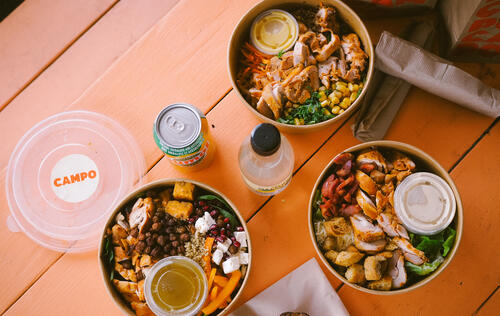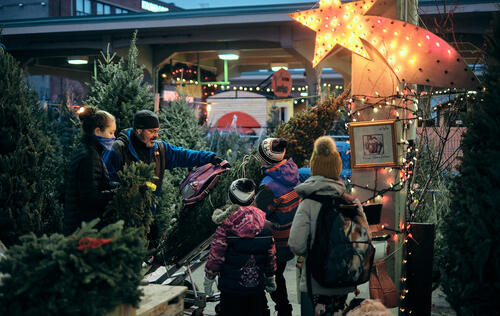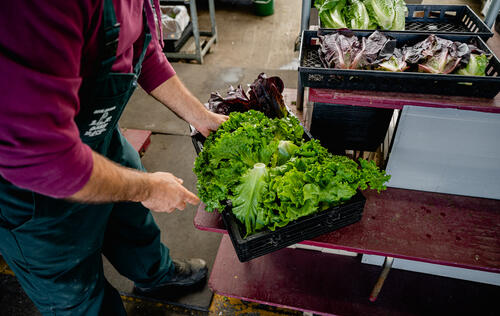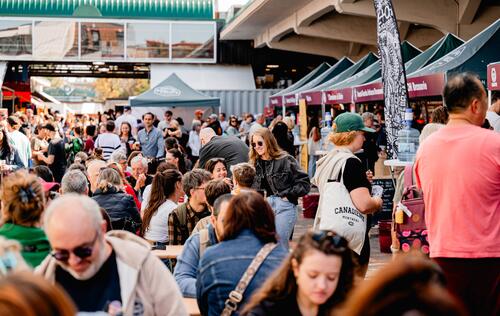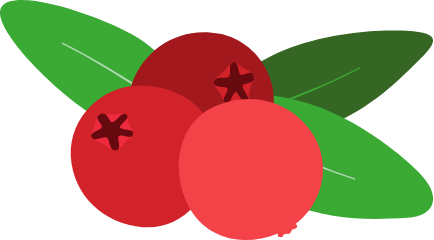A morning with Philippe Labelle-Picard at the Au Pied de Cochon cabin
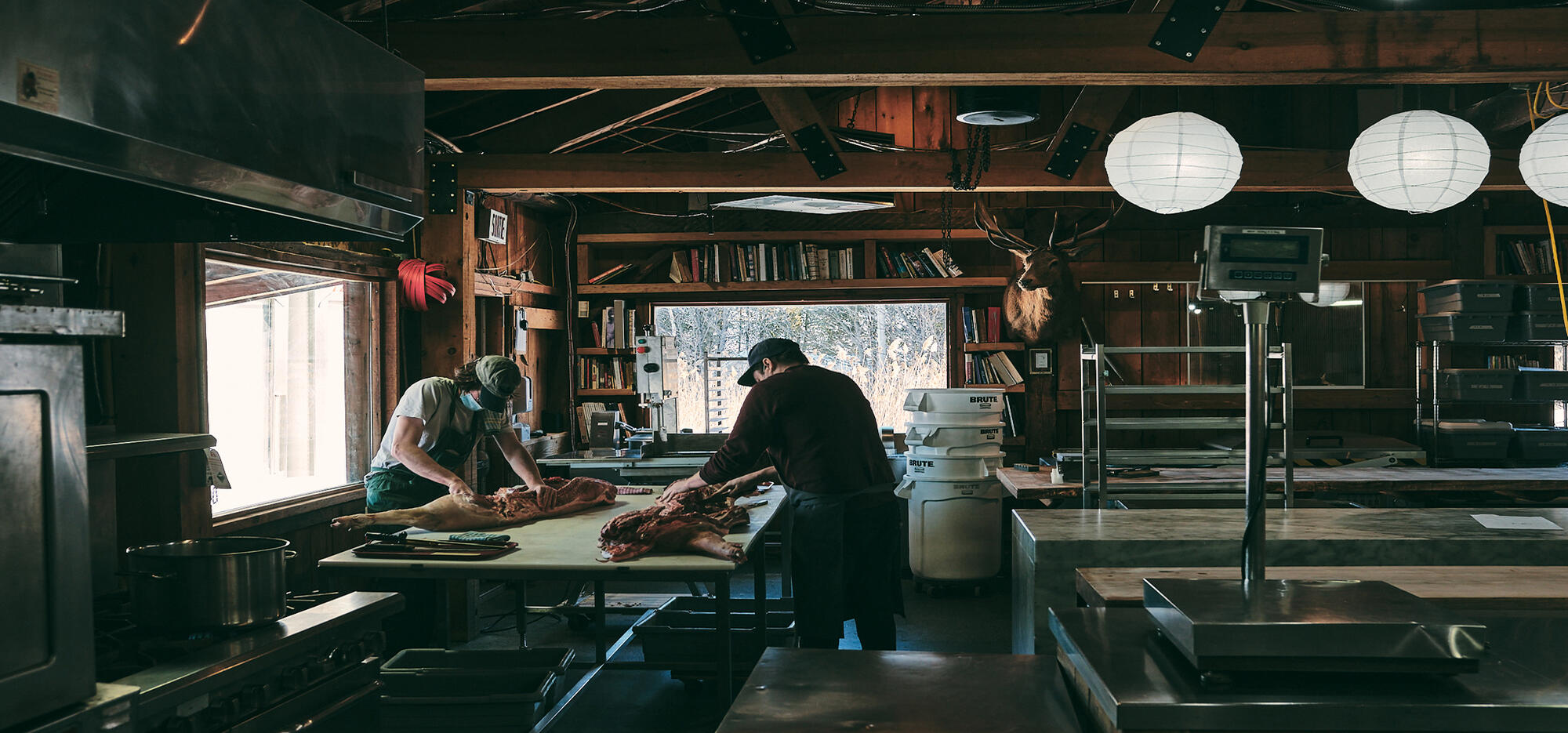
Restaurateurs and their suppliers have had a tough time for almost a year. Fortunately, thanks to the implementation of takeout menus, kitchens have been able to continue producing and chefs have been able to source their produce from producers and artisans.
This is the case for Philippe Labelle-Picard, chef of the Au Pied de Cochon sugar shack for the past year, who regularly frequents the Montreal Public Markets in search of the best Quebec products. These products are, moreover, the trademark of the iconic Pied de Cochon group and its founder, Martin Picard, whose presentation speaks for itself, having garnered national and international acclaim over the years.
Like the eponymous Montreal restaurant, considered one of the best restaurants in North America, the Cabane Au Pied de Cochon has proven to be a pioneer, being the very first to combine the sugar shack concept with playful gastronomy. Combining reinventions of Quebec classics with a gourmet exploration of other culinary cultures, La Cabane is a favorite with foodies, who usually flock there every spring and fall.
In fact, many products are already being prepared for sale on the group's website: pies and tourtière, cretons, duck bines, a full menu, and, of course, a wide range of maple-based products (pie, taffy, butter, fudge, condensed milk, alcohol, etc.), the king ingredient of sugar shacks and Philippe Labelle-Picard, who loves working with it in all its forms.
So, at the dawn of a new maple-shack season that, like 2020, will undoubtedly be different from the ones we love, we spoke with this chef who is passionate about fresh produce from public markets.
What is your role at Cabane Au Pied de Cochon?
I'm in charge of the kitchen. I'm responsible for planning new menus, developing new products, and preparing dishes for the PDC boutique. I also manage the kitchen team, which is a challenge in itself in an industry that was already suffering from staff shortages before the pandemic. St-Benoît de Mirabel isn't Montreal.
How are new recipes developed at Cabane Au Pied de Cochon?
Everything is done collaboratively here, on the land of the cabin as well as in the kitchen. An idea for a dish can come from someone cooking something by a fire outside, then make its way to the cabin menu. If the story behind the dish is good and it tastes good, it will contribute to the creative process. This approach stems from Martin's vision and his tastes. We can draw inspiration from what we see here and there, but it's the chef who has the final say. He's the cornerstone of Le Pied de Cochon.
Does the cabin's environment inspire your creativity?
Yes, and it's sometimes a lot to manage! Here, we follow two key seasons: the maple syrup season, and therefore the apple season. These two products are extraordinary, and we love incorporating them everywhere. Also, since we have to adjust our menus for thousands of guests, it's quite a challenge. We literally cook for all of Quebec!

Does growing up in the restaurant industry contribute to your passion for cooking?
I didn't know at first that I would work in this field. I went to study business management until, during a conversation, Martin made me realize that I might have made a half-hearted choice. He asked me, "What are you going to manage?" "What will your business be?" I was speechless; I had no answer for him. It was an eye-opener. I finally dropped out of CEGEP and went to work in a bakery at La Cabane. And there, I began to immerse myself in the environment that suited me. My passion for this profession grew throughout my apprenticeship there. So, ultimately, you could say that my closeness to this environment has contributed to what I do today.
How do you stay inspired by local products?
We cook seasonally, and that's what inspires us. We constantly try to present ingredients to people in ways they're less familiar with and that surprise us. For example, maple syrup is an ingredient that's part of our heritage and can be used in both savory and sweet recipes. We like to work with what's around us. In the morning, we stop by the Jean-Talon Market and ask the vendors what the seasonal vegetables are. We work closely with producers and work with what they have in stock.

What's your favorite type of syrup?
It depends on my mood. If I'm making baked beans, I need an end-of-season syrup that will boil longer. It has a different consistency and a bitterness that pairs well with the meat and aromatics of the baked beans. With a clear syrup that tastes of creamed sugar, we can make something simple that allows us to truly savor the product, like maple taffy on snow. As for the best syrup I've ever tasted, well, it's from a sugar shack where the maple syrup producer cooked it over a wood fire. It tasted of smoke, wood, and caramelization; it was fantastic!
After grocery store products, cookbooks, numerous restaurants, the TV show, etc., what is your wish for Pied de Cochon?
I want us to continue cooking with maple syrup, apples, and local products. And I'd like us to show, after the pandemic, that beyond the products and takeout menus, La Cabane Au Pied de Cochon is, above all, a restaurant that offers beautiful menus and has an exceptional, hard-working team. My goal is to restart catering and bring people back to Saint-Benoit-de-Mirabel.
See you soon, Philippe! And in the meantime, we'll be able to order dishes, menus, and products from the Pied de Cochon group, as well as those from all the participating sugar shacks on the Ma cabane à la maison platform. And, of course, the maple syrup producers who offer their wonderful products at our Montreal public markets!
A text by Sophie Ginoux from Caribou magazine – Photos by Vivien Goumand
The Montreal Public Markets family is made up of producers, merchants, and artisans. For years and generations, they've been getting up early, experimenting, sometimes failing, starting over again, staying up, harvesting, and succeeding! Day after day, they proudly stand behind their stalls as if at the head of a table, inviting us to dine. They are the heart and soul of a market, the essence of its personality, the reason we want to return. The Family Portrait series pays tribute to and tells the story of these pillars of our public markets.
This project was funded through the Proximity Program, implemented under the Canadian Agricultural Partnership, under an agreement between the governments of Canada and Quebec.
